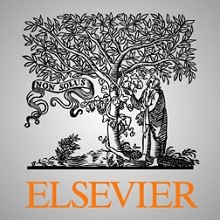
دانلود مقاله اهمیت حسابرسی در ارائه اطلاعات مفید
چکیده
1. مقدمه
2. پیشینه سازمانی و بررسی ادبیات
3. طراحی تحقیق و توسعه فرضیه
4. نتایج تجربی و بحث
5. نتیجه گیری و پیامدها
اعلامیه منافع رقابتی
قدردانی ها
مراجع
Abstract
1. Introduction
2. Institutional background and literature review
3. Research design and hypothesis development
4. Empirical results and discussion
5. Conclusions and implications
Declaration of competing interest
Acknowledgements
References
چکیده
برای بهبود سودمندی نظرات حسابرسی، در 23 مارس 2021، کمیسیون تنظیم مقررات اوراق بهادار چین، حسابرسان را موظف کرد که اهمیت کمی کلی صورتهای مالی تلفیقی را در توضیحات ویژه نظرات حسابرسی اصلاح شده افشا کنند. این مقاله شرکت های چینی A-سهام صادر شده با نظرات حسابرسی اصلاح شده برای دوره 2020-2022 را به عنوان نمونه تحقیق انتخاب می کند و ارزیابی اهمیت در عملکرد حسابرسی و آموزنده بودن اهمیت حسابرسی را تجزیه و تحلیل می کند. یافته های ما به شرح زیر است. (1) متداولترین مبانی مورد استفاده حسابرسان برای اهمیت، سود و درآمد است، با تفاوتهای قابلتوجهی در درصدهای اعمال شده برای مبانی مختلف و تغییرات حتی در یک پایه. (2) هر چه میزان اهمیت بیشتر باشد، کیفیت حسابرسی ضعیف تر است. این همبستگی منفی عمدتاً در سناریوهایی مشاهده میشود که در آن شرکتهای حسابرسی شده درگیر مدیریت نزولی سود هستند و شایستگی موسسات حسابرسی یا حسابرسان نسبتاً پایین است. (3) شرکتهایی که اهمیت کمی را در توضیحات ویژه نظرات حسابرسی اصلاح شده افشا میکنند، نسبت به شرکتهایی که اهمیت حسابرسی را افشا نمیکنند، ضریب پاسخ سود کمتری دارند. این تحقیق "جعبه سیاه" فرآیند حسابرسی را روشن می کند و ارزش اطلاعاتی اهمیت حسابرسی را تأیید می کند. نتیجهگیریها برای حسابرسی تنظیمکنندگان استاندارد، سرمایهگذاران و تنظیمکنندهها ارزش قابل توجهی دارند.
Abstract
To improve the usefulness of audit opinions, on 23 March 2021, the China Securities Regulatory Commission mandated that auditors disclose overall quantitative materiality of consolidated financial statements in special explanations of modified audit opinions. This paper selects Chinese A-share companies issued with modified audit opinions for the period of 2020–2022 as the research sample and analyzes the assessment of materiality in audit practice and the informativeness of audit materiality. Our findings are as follows. (1) The most commonly used bases for materiality by auditors are profit and income, with considerable differences in the percentages applied to the different bases and variations even within the same base. (2) The higher the materiality amount, the poorer the audit quality. This negative correlation is mainly observed in scenarios where the audited companies engage in downward earnings management and where the competency of audit firms or auditors is relatively low. (3) Companies that disclose quantitative materiality in the special explanations of modified audit opinions have a lower earnings response coefficient than companies that do not disclose audit materiality. This research sheds light on the “black box” of the audit process and verifies the information value of audit materiality. The conclusions are of significant value to auditing standard-setters, investors and regulators.
Introduction
Materiality is the magnitude of the impact of audit errors on the audit client's decision making, which is one of the fundamental concepts of auditing and is utilized throughout the audit process ( Christensen et al., 2020 ). In planning and performing an audit, an auditor is required to make judgments about materiality to provide a basis for assessing the risks of material misstatement and preparing for further audit procedures. They must also apply materiality when evaluating the impacts of identified audit misstatements and uncorrected misstatements on financial statements. Therefore, materiality directly determines the quality of the audit. However, due to data limitations, how auditors in China establish materiality has remained a “black box.”
On 9 March 2021, the China Securities Regulatory Commission (CSRC) issued its “Guidelines for the Application of Supervisory Rules—Audit Category No. 1,” explicitly mandating that “an auditor should disclose the overall quantitative materiality of consolidated financial statements in special explanations of modified audit opinions, including materiality bases and percentages, calculation results (the amount) and the basis for selection.” This guideline took effect on 23 March 2021, following which auditors began to disclose the overall materiality of consolidated financial statements in special explanations of modified audit opinions. 1
Conclusions and implications
We take Chinese A-share listed companies issued with modified audit opinions during the period from 2020 to 2022 as a research sample to analyze materiality assessments in auditing practice, the relationship between materiality and audit quality and the impact of materiality disclosure on investor decision-making. We present four key results. First, the Big 10 audit firms are more likely to disclose audit materiality than peers. Second, the most common bases for materiality used by auditors are profit and income, the percentages applied to the different bases vary greatly and, even for the same base, the percentages vary to some extent. Third, the higher the materiality, the poorer is the quality of the audit. This negative correlation occurs mainly when the client firms engage in downward earnings management and among audit firms and auditors of lower competence than peers, indicating that materiality predicts the audit quality and has a certain level of informativeness. Fourth, disclosing audit materiality reduces investors’ perceptions of the reliability of financial reports.
The research in this paper assists in understanding how auditors establish materiality in auditing practice, thus opening the “black box” of the auditing process to an extent. In addition, our findings have important implications. First, for the auditing standard-setters, although the relevant rules emphasize that the bases and percentages contained in the questions and answers are examples, not regulations, auditors rely heavily on the examples in auditing standards, application guides and questions and answers in practice. Therefore, standard-setters should pay attention to this phenomenon and treat the examples provided with caution. Second, materiality itself is informative, and this enables investors, analysts and regulators to judge the quality of audits or audited financial statements based on materiality and make better investment decisions or enhance the efficiency of regulation.
